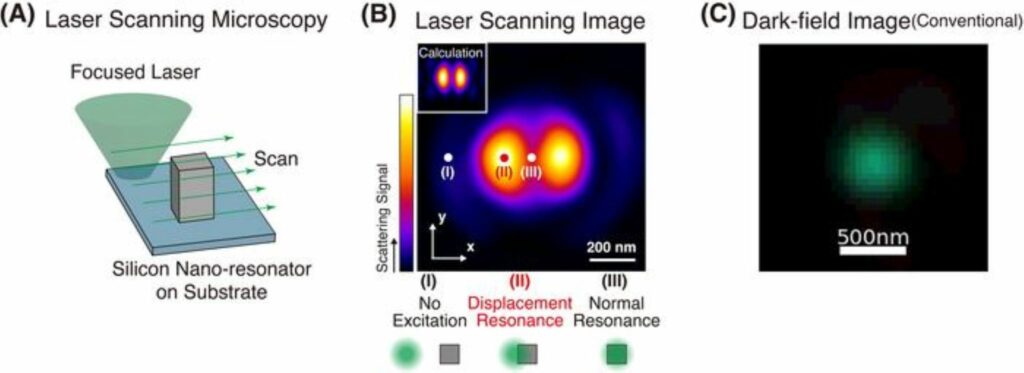Scientists are studying a phenomenon called Mie scattering and want to find ways to use it for exciting technologies. Mie scattering happens when light interacts with particles of a specific size.
In a recent study, a team of scientists, including those from Osaka University, overcame what they thought were fundamental limitations in improving the efficiency of Mie scattering.
Until now, scientists believed they could only control Mie scattering by changing the light’s wavelength or the size of the nanostructure it interacts with. But in this study, the team aimed to go beyond these limits by focusing on how the laser aligns with the nanostructures, building on recent studies in this area.
What scientists did was they misaligned the incident laser. They displaced the illumination position on a nanometer scale from the center of the target nanostructure.
In their research, scientists discovered that how light scatters in silicon nanostructures depends on how much the laser is not perfectly aligned with the center of the nanostructure. Even a tiny misalignment of just 100 nanometers could bring out the most substantial Mie resonant scattering, which was not visible before because regular microscopy uses different light.

These findings have the potential to improve optical technologies. For instance, the team’s work might assist scientists in creating all-optical transistors—these are like regular transistors but use light instead of electricity, and they could perform even better than the usual electronic ones.
Junichi Takahara, senior author, said, “We’re excited because we’ve expanded upon the fundamentals of the century-old light theory of Mie scattering. Applications are wide-ranging and currently underway in our laboratory.”
Scientists noted, “This work is an important step forward in understanding light–matter interactions. Furthermore, these results are not limited to silicon, and the incident laser does not need to be a visible wavelength, encouraging exciting advancements in meta-photonics and bringing fantastical technologies like cloaking devices one step closer to reality.”
Journal Reference:
- Tang, YL., Yen, TH., Nishida, K. et al. Multipole engineering by displacement resonance: a new degree of freedom of Mie resonance. Nat Commun 14, 7213 (2023). DOI: 10.1038/s41467-023-43063-y
